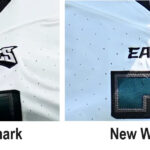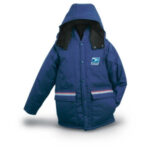During the American War of Independence, the concept of a “uniform” was still evolving, but essential garments defined the appearance of soldiers. Among these, the shirt was arguably the most fundamental. More than just a piece of clothing, the 18th-century shirt served as underwear, nightwear, and a crucial component of a soldier’s daily attire. Understanding the shirt is key to understanding the Uniforms Of The American War Of Independence.
The 18th-Century Shirt: More Than Just Clothing
In the 18th century, a man’s shirt was considered his undergarment. Wearing a shirt in public without an outer layer like a waistcoat or jacket was deemed inappropriate, almost akin to being “naked.” This perspective highlights the shirt’s primary role as a foundational piece of clothing. However, practicality sometimes dictated otherwise. During strenuous tasks, such as when Patriot forces labored on fortifications during the Siege of Boston in the sweltering summer of 1775, men often stripped down to their shirts for comfort and ease of movement.
Shirts of this era were notably long, typically reaching mid-thigh or just below the knee. This length served a dual purpose: functioning as both day wear and nightgowns. For many, the shirt was their only form of underwear, further emphasizing its essential nature. A dramatic illustration of the shirt’s significance is the story of Lieutenant Governor Thomas Hutchinson. Following the Stamp Act Riot in 1765, an enraged mob ransacked his mansion, destroying all his belongings, including clothing. Appearing in court the next day in only a torn shirt, Hutchinson was acutely aware of his “naked” appearance by 18th-century standards. He apologized to his fellow judges, stating, “Excuse my appearance, I have no other garment,” before being overcome with emotion. This anecdote underscores the social and practical importance of the shirt in daily life and as an indispensable item of clothing.
Shirts as Part of Military Attire during the Revolutionary War
Shirts worn during the American Revolution were crafted for comfort and functionality. Made from materials like linen, cotton, lightweight flannel, and fabric blends, these shirts were designed to be loose and wide, allowing for maximum freedom of movement – a critical consideration for soldiers in active service. The majority were made from plain, checked, or striped fabrics, reflecting the practicality over elaborate design. Interestingly, the basic cut of shirts was consistent across social classes. Whether for a laborer or a gentleman, the pattern was based on rectangles and squares. The distinction lay in the fabric quality and the level of craftsmanship. A gentleman’s shirt would be made from finer white linen or cotton, potentially featuring ruffles and exhibiting superior hand-stitching. In contrast, a common soldier’s shirt prioritized durability and affordability.
Shirts of the American Revolutionary period featured narrow wristbands or cuffs, typically fastened with wrist buttons, also known as cufflinks. Collar heights varied but generally were not as tall as the high collars that became fashionable in the late 1790s and early 19th century. Shirts were pullover style, closing only at the collar, lacking the front plackets and buttons seen in later shirt designs. Closures at the collar utilized buttons, linen or thread ties, or a combination of buttons and loops. Buttons themselves were small, around 1/2″ or 7/16″ in diameter, and made from diverse materials such as thread, horn, cloth-covered wood, metal, or leather.
The Hardships of Shirts in Military Service
In the harsh realities of military service, particularly during warmer months and campaigns, shirts were often the first clothing items to wear out. Active duty, constant wear, and limited laundry opportunities meant shirts quickly became dirty, ragged, and prone to falling apart. For the thousands of Patriot soldiers involved in campaigns like the Siege of Boston, clean, new shirts were an infrequent luxury. Replacing worn-out shirts was a constant challenge, highlighting the logistical difficulties of supplying armies in the field during the American War of Independence. The humble shirt, while seemingly basic, was an essential yet often under-appreciated part of the uniforms of the American War of Independence, embodying both the everyday clothing of the 18th century and the practical demands of military life.


